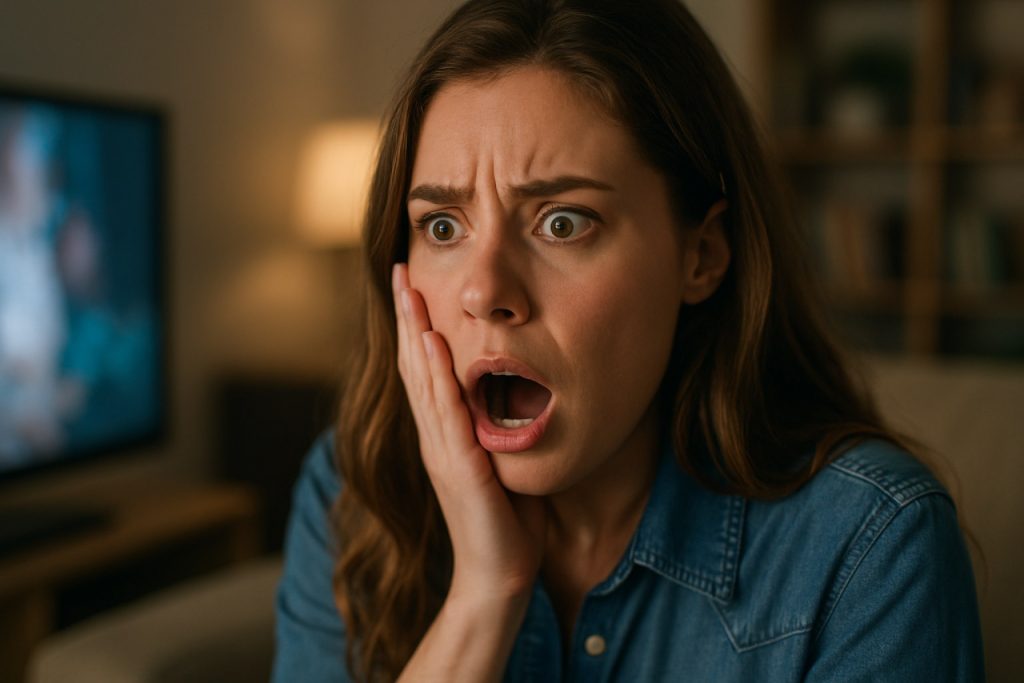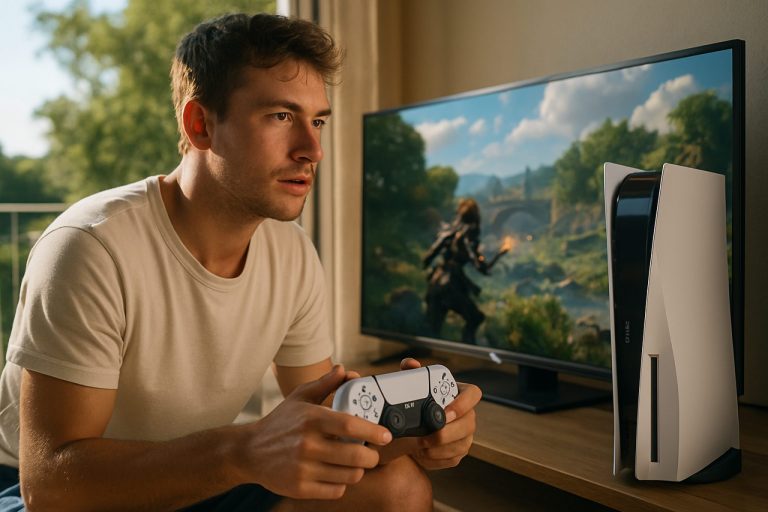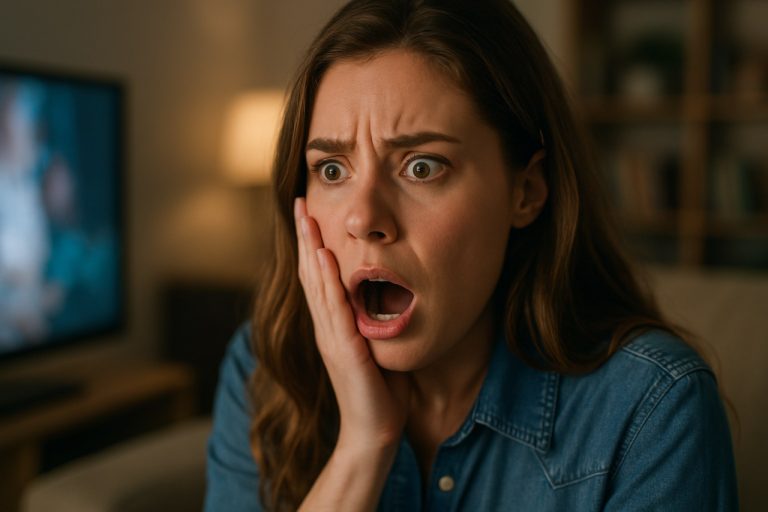
- Prestige TV like The Last of Us uses both apocalyptic themes and intense moral choices, pushing viewers to confront emotional trauma and dilemmas.
- The show’s adaptation of the video game delivers shocking, violent moments but risks prioritizing spectacle over meaningful character development.
- Lack of perspective for key figures like Abby undermines empathy and prevents her from becoming a fully-realized, complex character, unlike in the original game.
- Rushed pacing, skipped storylines, and unresolved mysteries may alienate fans, echoing mistakes of earlier shows like The Walking Dead.
- Successful TV storytelling requires rewarding audience commitment with depth, nuance, and character-driven arcs—not just shock or heartbreak.
- The true legacy of The Last of Us will depend on its ability to craft meaning from pain and reveal the humanity behind its darkest characters.
Night descends on a battered world, shadows slanting across faces worn by loss and violence. The air hums with menace—a villain emerges, swinging dread like a hammer, shattering bonds in brutal, breathless scenes. For many, these are the haunting images that ignite debates across living rooms and online forums, proof that the boundary between beloved stories and audience heartbreak has never felt thinner.
Prestige television has entered an era shaped not only by apocalyptic landscapes and infected monsters, but by the agonizing weight of moral choices. HBO’s The Last of Us wades deeper still, daring to adapt milestones from its acclaimed video game roots—moments so harrowing, viewers are left reeling days later. Yet, as the show grapples with these narrative shocks, it confronts a dilemma that felled giants before it: finding meaning amid the carnage.
For longtime fans, echoes of AMC’s once-mighty Walking Dead ring out. That series famously changed course after delivering a devastating, relentless on-screen death—a cliffhanger meant to galvanize, but which triggered one of cable’s most notorious ratings collapses. Underneath the furor was a simple truth: audiences crave not just spectacle, but payoff.
The Last of Us treads similar terrain. As Joel’s fate unfolds—shocking, merciless, witnessed by his adopted daughter Ellie—viewers brace for a season steered by vengeance and grief. But as the cycle of violence turns, all roads circle back to Abby, the woman whose revenge upends the story’s moral compass. Video game veterans know Abby as both avenger and victim, destined for empathy through a shared controller; HBO’s younger adaptation, however, wields her sparingly and savagely. On screen, she is storm and shadow—a presence defined by loss inflicted, not pain endured.
This creative choice packs efficiency, but at a price: the audience’s chance to see Abby as more than the villain. Had we glimpsed the world through her eyes—the hope and hurt, the haunting mirror between her and Ellie—the series might have echoed the depth that made its digital forebear a classic. Instead, Season 2’s breakneck rhythm leapfrogs crucial context, risking investment for shock value. Abby’s silhouette looms large, yet her soul remains undiscovered territory.
Seasonal gaps, hasty arcs, and lingering mysteries compound the challenge. Fierce rival factions—the Wolves, the cryptic Seraphites—drift in and out, their motives murky, their leaders almost myth. Key confrontations are set up only to be skipped over, inviting frustration rather than suspense. The promise of future revelations tempts, but in an era flooded with must-see options, patience wears thin. As with Squid Game and House of the Dragon, television risks forgetting its most basic pact: reward the commitment of those who keep watching.
The lesson is glaring: TV’s greatest villains aren’t those who swing the bat, but the producers who mistake trauma for drama, mistaking cliffhangers for closure.
Yet, hope glimmers. After all, even The Walking Dead found ways to revive its doomed pariahs—allowing time, nuance, and intricate storytelling to work their slow magic. Redemption, however, demands presence—moments where antagonists become three-dimensional, not just echoes of violence past.
As HBO readies its next moves, The Last of Us faces a crossroads. The series has the tools—stellar performances, a fiercely loyal fan base, and a legacy that commands respect. But if future seasons neglect the careful character work that elevated the source material, it risks alienating the very audience that turned heartbreak into event television.
Brutality alone doesn’t make for enduring storytelling. The most unforgettable shows stitch meaning from pain, granting even their darkest figures a humanity worth lingering over. The true test for The Last of Us won’t be how many hearts it can shatter, but how many it can persuade to keep beating, no matter how deep the night.
The Last of Us: Why Season 2 Risks Losing Its Biggest Fans—And How HBO Can Fix It
Prestige TV in the Age of Morally Complex Villains
HBO’s adaptation of The Last of Us has set a new bar for post-apocalyptic drama, blending emotional storytelling with the bleak tension of survival. But as the series deepens its exploration of morality, grief, and revenge, viewers and critics are asking: Is shock value overshadowing meaningful character arcs? Here’s what wasn’t fully explored in the original article—and why it matters for fans, critics, and the future of prestige television.
—
Real-World Use Cases: Video Game Adaptation Done Right?
The original The Last of Us Part II video game was lauded for its non-traditional narrative—shifting perspectives so players not only empathized with protagonist Ellie, but also with Abby, the controversial antagonist. According to Naughty Dog, the game’s developer, over 10 million copies had been sold as of 2022, reflecting immense global impact and a fiercely loyal player base.
How the Show Differs:
– Game vs. Show Structure: In the game, players control both Ellie and Abby for extended periods, making Abby’s trauma and motivations personal. The HBO series, at least in early Season 2 scripts and leaks, is accused of showing Abby primarily as a cipher—her true backstory rushed or omitted.
– Critical Reception: Reviewers like Brian Tallerico at RogerEbert.com consistently note the show’s visual fidelity but lament its “missed opportunities for perspective-shifting storytelling.”
—
Industry Trends: Audience Fatigue with “Trauma TV”
The trend of prestige dramas utilizing relentless brutality isn’t new. In 2023, Nielsen reported declining average viewership for the second seasons of even high-profile shows, as many fans tune out when pacing and emotional payoff lag behind escalating violence.
– Case Study – The Walking Dead: Infamous for its cliffhanger killings, the series lost millions of viewers after a particularly brutal finale, sparking debates that still shape how other shows measure stakes versus satisfaction.
—
Features, Specs & Pricing: HBO and Streaming Competition
– Budget: The Last of Us enjoys one of the highest budgets per episode in HBO history, rivaling Game of Thrones.
– Streaming Exclusivity: Available on Max (formerly HBO Max), the series is part of HBO’s premium content strategy, making it a crucial investment for the platform as competition with Netflix and Amazon intensifies.
– Performance: Pedro Pascal (Joel) and Bella Ramsey (Ellie) have received critical acclaim, both earning major award nominations.
—
Controversies & Limitations
– Abby’s Portrayal: One of the most controversial video game characters of the decade, Abby’s arc won the game numerous awards but also spawned online harassment campaigns. The show risks reigniting such controversies—and facing backlash for sidelining Abby’s humanizing moments.
– Pacing Criticism: Viewers and critics note that compressed storylines and skipped context not only undermine emotional engagement, but also reduce the complexity that made the game’s narrative a modern classic.
—
Reviews & Comparisons
– Critical Split: Rotten Tomatoes scores for The Last of Us Season 1 sit in the high 90s, but social media discourse points to factional fan divides, especially between longtime gamers and newcomers.
– Competition: Compared with shows like Squid Game or House of the Dragon, The Last of Us is praised for fidelity and performance, but knocked for safe pacing and deviation from the game’s bold narrative risks.
—
Insights & Predictions: Where Does HBO Go From Here?
Market Forecasts:
– Given reported renewal and expansion plans, HBO is betting on the series’ long-term resonance.
– Experts like The Hollywood Reporter’s James Hibberd predict continued strong audience retention—if the writers can balance brutality with earned emotional payoffs.
Pressing Questions (Answered):
– Will Abby’s side of the story be better told in later episodes? Showrunners claim a richer perspective is coming, hinting at flashbacks and dedicated episodes.
– Is audience backlash a risk? Yes, especially if emotional moments are sacrificed for rapid-fire plot twists.
– Can the show avoid walking dead’s demise? Time will tell—nuanced storytelling and slower pacing could make all the difference.
—
How-To: Engaging with Morally Grey Narratives
1. Re-watch Key Episodes from the perspective of supporting characters (especially Abby) to notice narrative clues about their motivations.
2. Join Online Discussions: Engaging with communities on platforms like Reddit and official HBO forums can reveal Easter eggs and deeper meanings.
3. Read Behind-the-Scenes Content: Interviews with showrunners and actors often highlight subtle choices made to build empathy for all characters.
—
Life Hacks for TV Fans
– Avoid Spoilers: Use browser extensions to filter keywords related to The Last of Us until new episodes air.
– Journal Your Reactions: Write down your thoughts after each episode to track emotional impact. This can help distinguish scenes that are moving from those that feel gratuitous.
– Host Dual Watch Parties: Invite both game fans and show newcomers—discussion afterward can triple your enjoyment and offer different perspectives.
—
Pros & Cons Overview
Pros:
– World-class acting and production values
– Faithful to core themes of the game
– Willingness to subvert traditional hero/villain roles
Cons:
– Risk of audience alienation due to rushed pacing
– Potential sidelining of key character development (especially for Abby)
– Emotional fatigue from relentless trauma
—
Quick Tips & Recommendations
– For Showrunners: Grant more screen time and depth to antagonists. Show their vulnerability, not just their violence.
– For Viewers: Be patient, but demand more—community feedback has changed show directions before (as seen with Game of Thrones and The Walking Dead).
– For Newcomers: Watch or read recaps of The Last of Us Part II game for fuller context, but beware of spoilers.
—
Bottom Line:
The future of The Last of Us depends on embracing the moral ambiguity that made its origins legendary. If HBO invests in character depth—especially for its so-called “villains”—and balances violence with empathy, this dark journey could become another timeless TV classic.
For more on streaming trends and TV industry insights, visit the main pages of Max, Netflix, and AMC.



